Question 3 - What have you learnt from your audience feedback?
Audience feedback played a large part in the production of my work, especially with what might have gone well with my magazine cover and film poster. Also I tried to look up different ways of meeting the needs of my target audience by sending out questionnaires or asking peers to look at my work then give me feedback.
When getting this feedback I understood how reliable and useful it is to make sure that I correctly meet the needs of my intended audience. Also I made sure that I regularly sent out questionnaires and feedback forms to either my peers or intended audience to allow me to get the best possible answers towards what they make like or enjoy to see in a trailer that will make them want to go and see an actual film. For example, for my first questionnaire, before starting to plan my work I sent a questionnaire out to my intended audience that were 15 years old. Who are still in school and love to listening to music and want to fit in with other people, which I tried to show with the female character I created but I feel as though I failed a little - I should of tried to show more of Samantha’s personal life at school so the audience can see their own characteristics within this character, and this is one thing that I would of improved on.
Questionnaire sent out to my intended audience
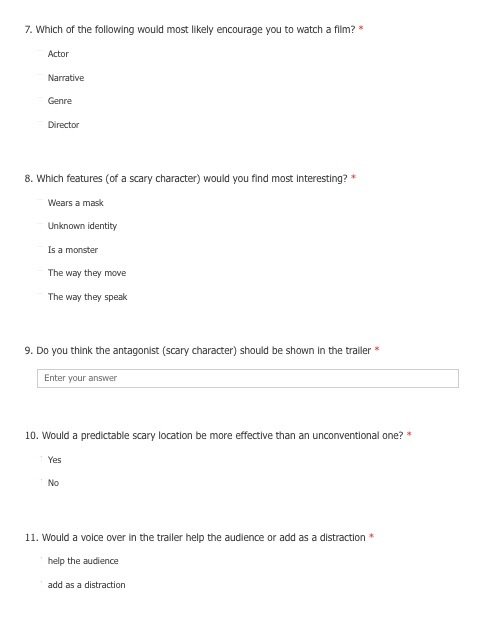
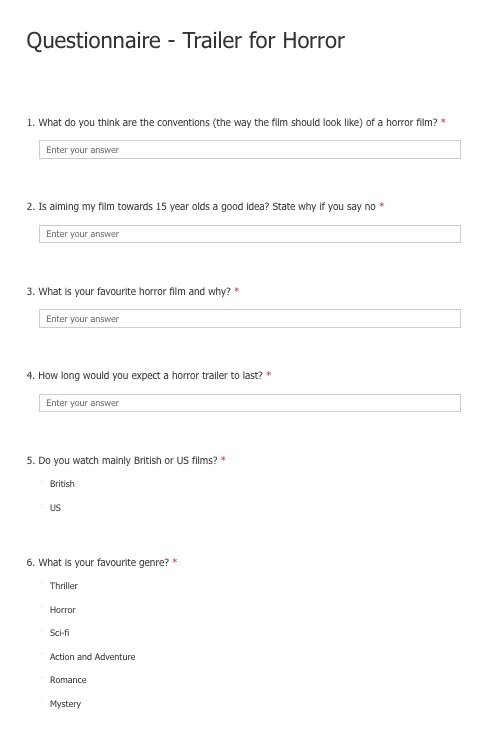
When creating my product I discovered that many people don't enjoy most horror trailers, this is why I came up with the idea of making sure it isn't too scary by having a thriller/horror genre merged together. As it would be a lot easier to present a 15 rating, without the extremely scary elements of blood guts and gore from the horror genre. Also I discovered that my intended audience would watch a film if it had a good narrative that would be portrayed through the trailer, which links to Barthes’ Codes where the trailer needs to create an enigma code. This is shown within my work as I establish puzzling imagery or mysteries as it goes along, but none of this in the narrative is then solved properly until the actual film is watched, an example from my work is from the start that foreshadows something bad is going to happen to someone. Also we know that it’s Samantha (tied up) and we then see little enigmas that will either help or hinder the narrative. The narrative can tease the audience by presenting a puzzle or riddle that needs solving and this is especially important for a trailer and this is what I wanted to show to help the needs of the target audience.
As well as this, throughout creating my ancillary pieces of work I made sure I kept getting feedback with improvements that might need to be made, evidence to prove this is when I got feedback about my poster that I created before the final one; I asked three people and this included two teachers and one of my peers in class and they suggested that the 'Samantha' text needs something to make it stand out a bit more. I needed actor’s names in a different font and it didn’t look as professional enough as ones that are already out there. I took advice from my peer, Sam, who gave me a few ideas of changing the image to it having a threshold technique by making 'Samantha' in red and white and the antagonist character blended into the background of 'Samantha' to help the reader/audience to created connotations towards why this might have been done.
Film Posters already out
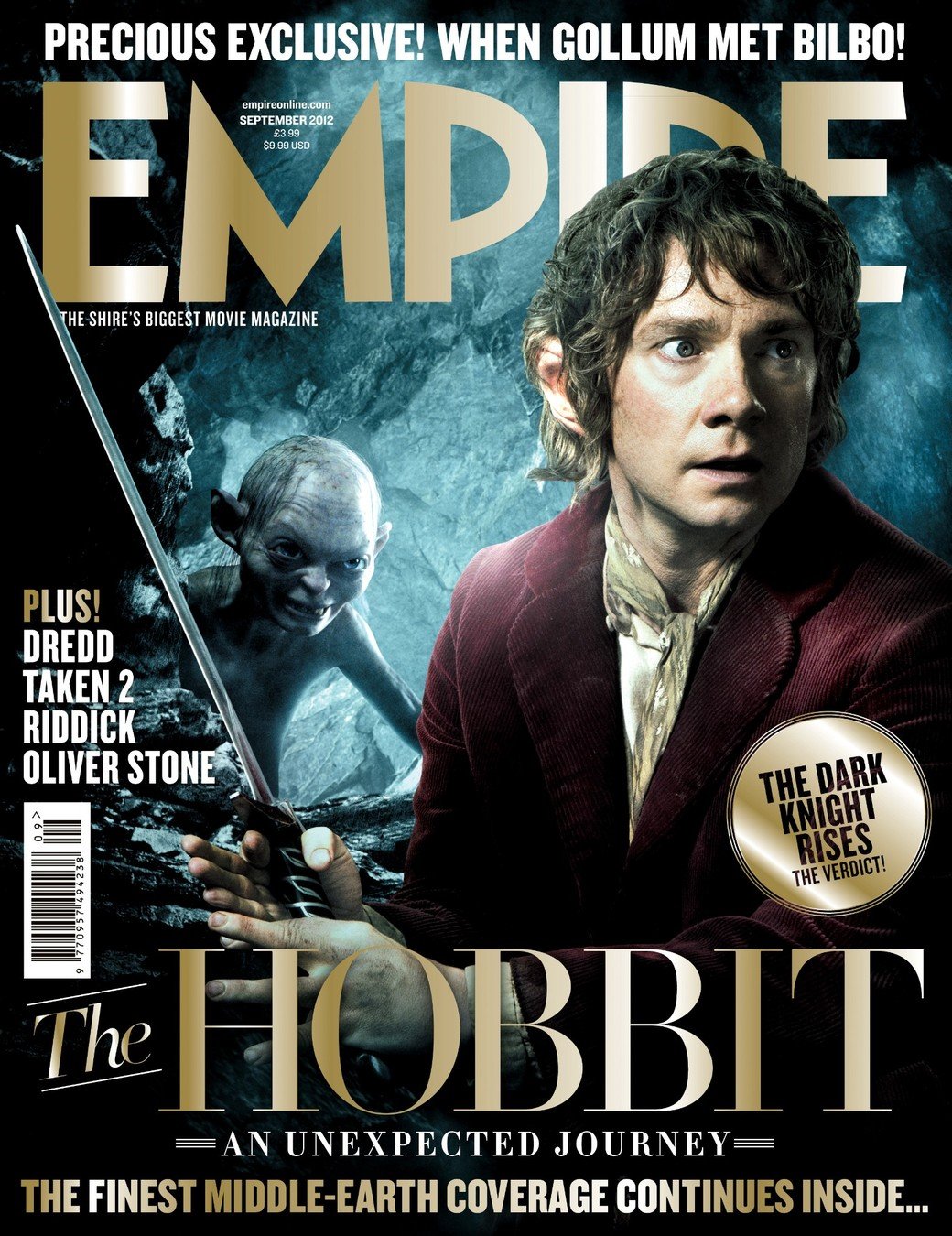

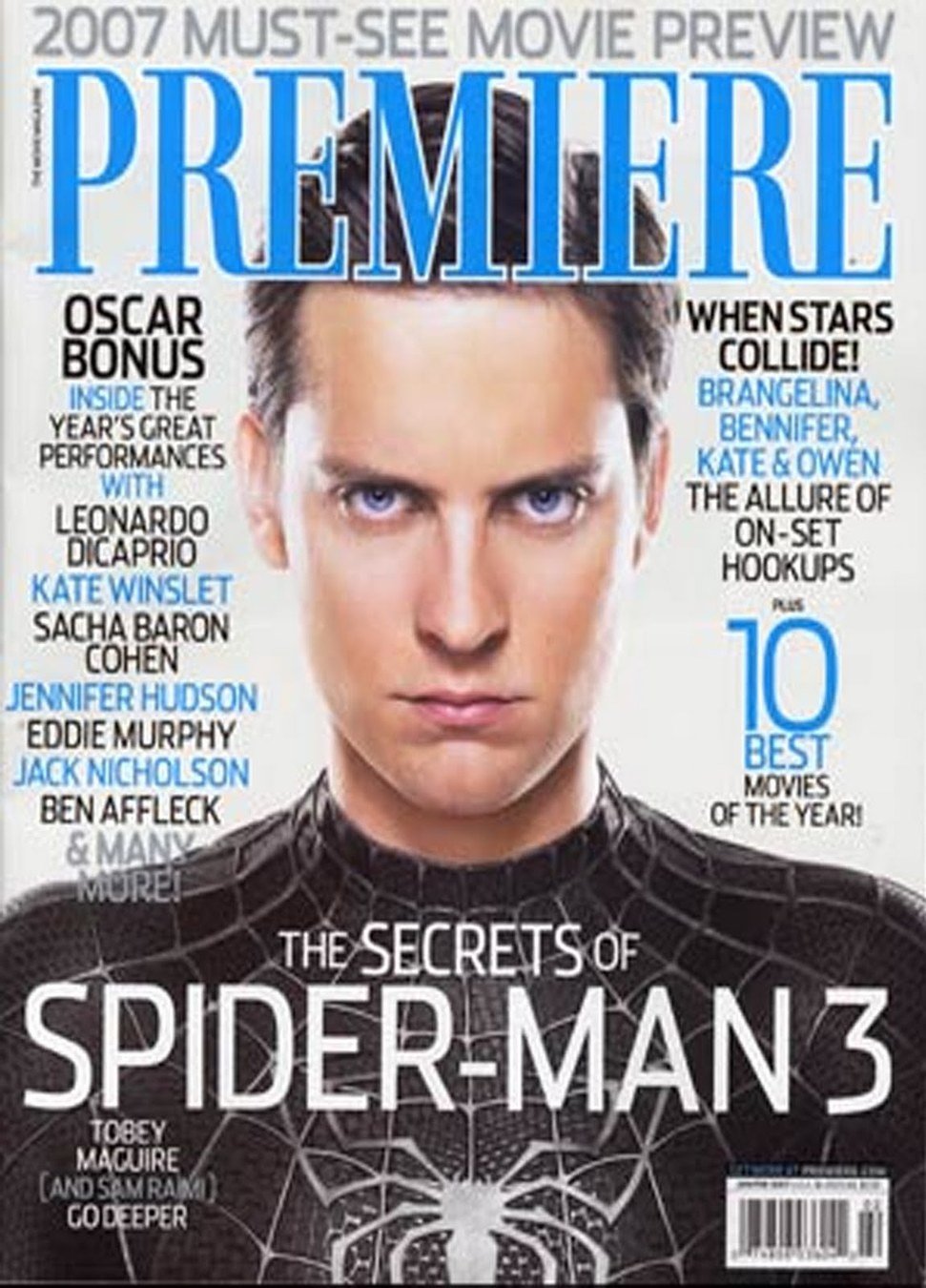
On all three of these front cover film magazines they all have a large image in the middle to show the main celebrity at the front, Empire however has two but the Hobbit at the front shows more power with the sword he is holding. The masthead of all three of the magazines are large and stand out from everything else that is going on and helps to grab the audiences attention, so they know what the makers of the magazine are. As well as this, all of the front covers use cover lines so the audiences know what to expect in the magazine, the colour scheme used with all three of the magazines makes the important parts stand out and links with where the films actors are from. Linking to this, I used the above ideas to help create my own magazine.
Draft posters
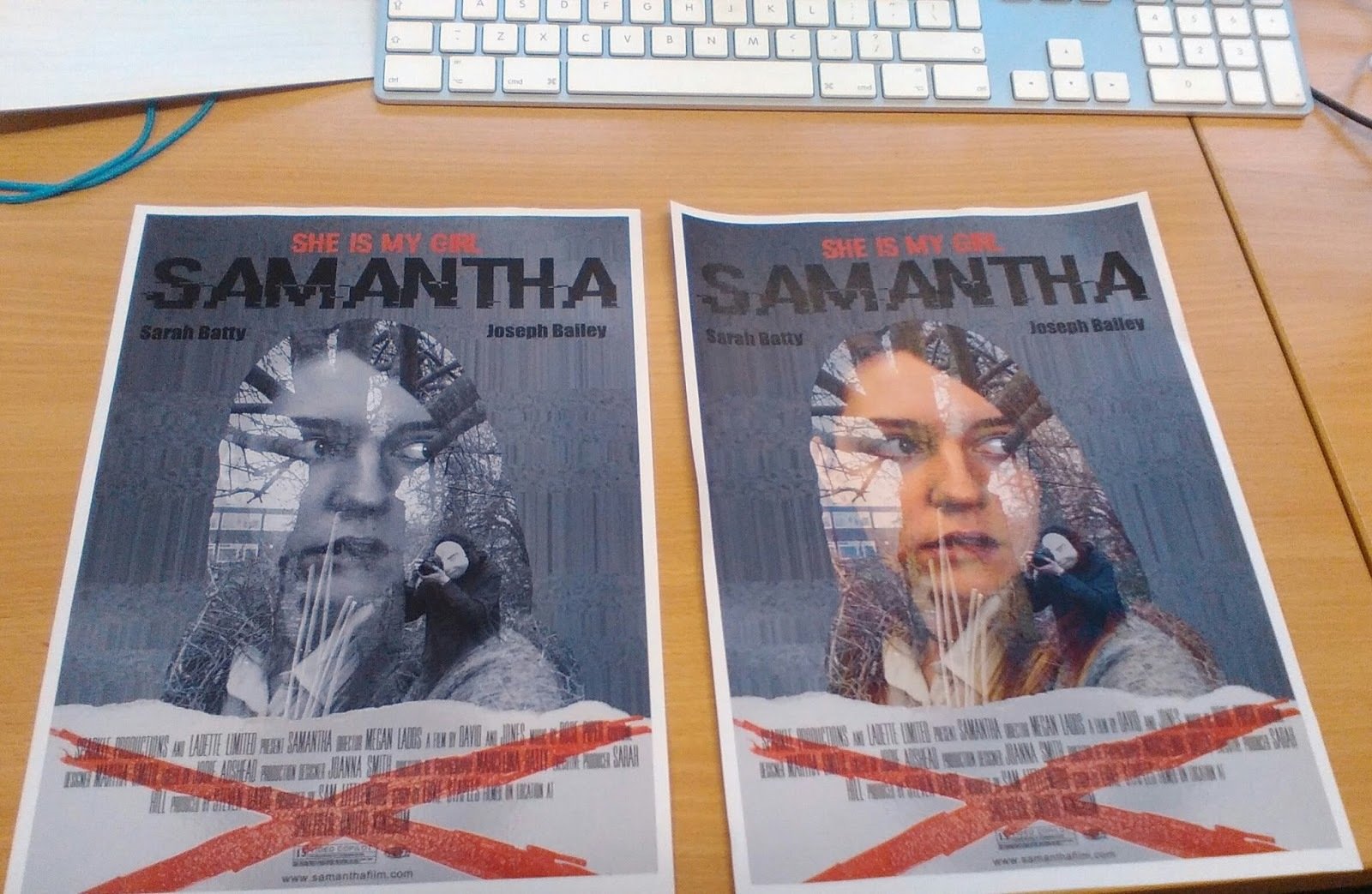
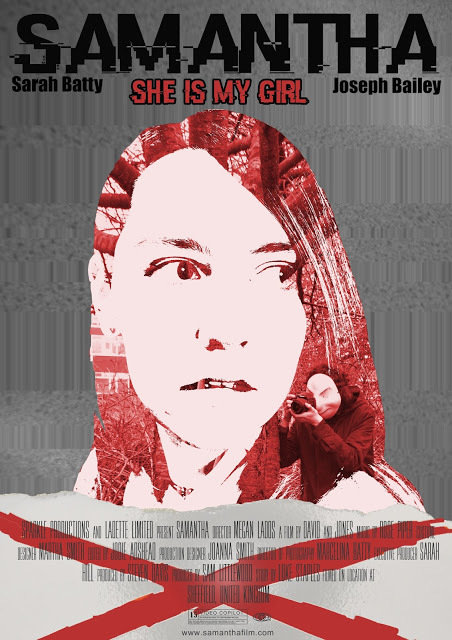
Final Poster
I took the feedback on board and used the same images, but instead made it look more like a painting using the threshold technique, to help suggest danger and it allows the audience to easily see both the images merged together as one.
The Reception Theory – Stuart Hall (1980s and 1990s) talked about the encoding and decoding model between the relationship of text and producer – the text is encoded by the producer and decoded by the reader and these may read something or look at something in different ways depending on what is being represented, from looking at my feedback given by peers and how my target audience have given different opinions on my work. I feel as though they have a clear understanding with what is being represented but gave me little bits of ideas to make my work even more interesting towards their own age range. As well as this a key improvement that I got told to change was the pace of the whole trailer as it was mostly set out like a short film rather than a trailer with quick paced shots, instead it was slower and this changed dramatically as I added in more intense shots and text to help tell the narrative. This is why it links to my target audience who were aged 15, having a preferred reading and without this they then won’t be able to understand what exactly is being shown through the narrative or what genre is being shown and a lot of the people I asked also had a personal interpretation of the genre that could be shown in my work.
examples of text used from trailer
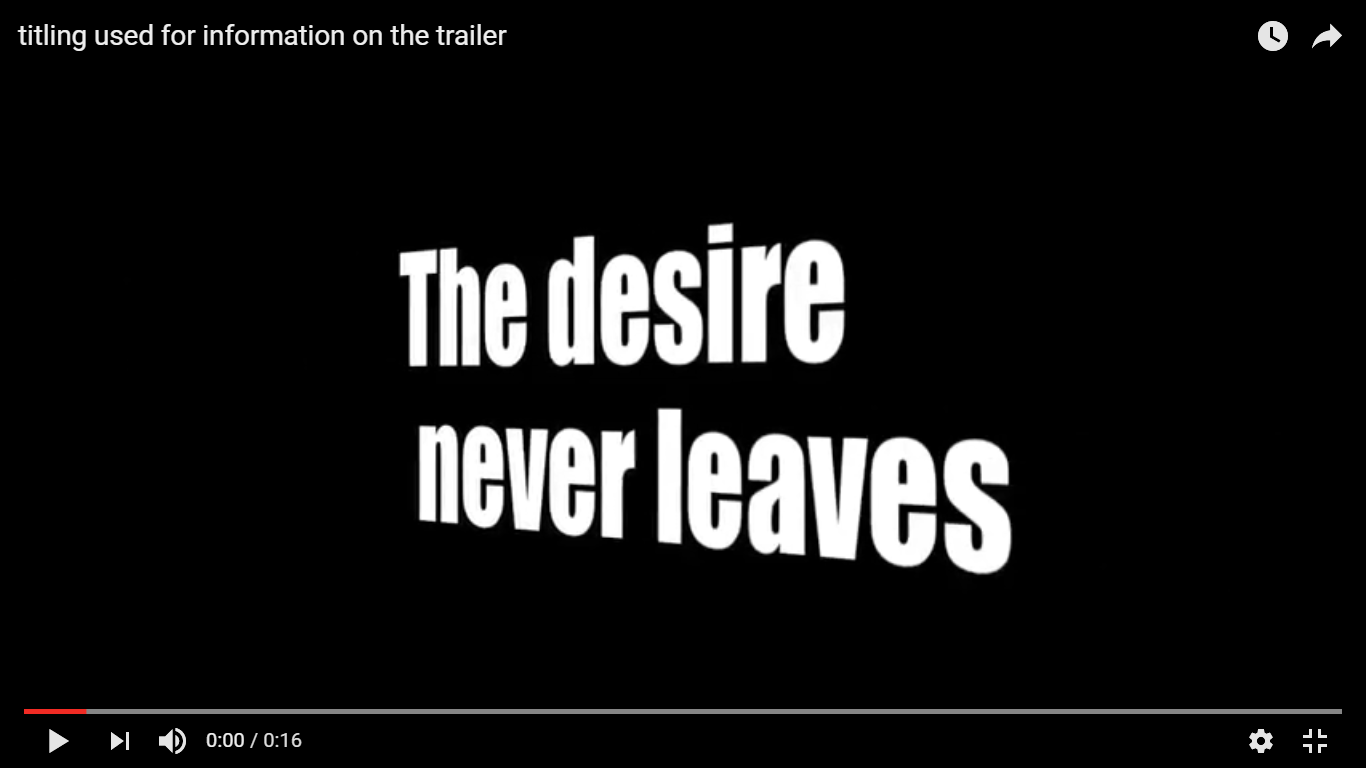
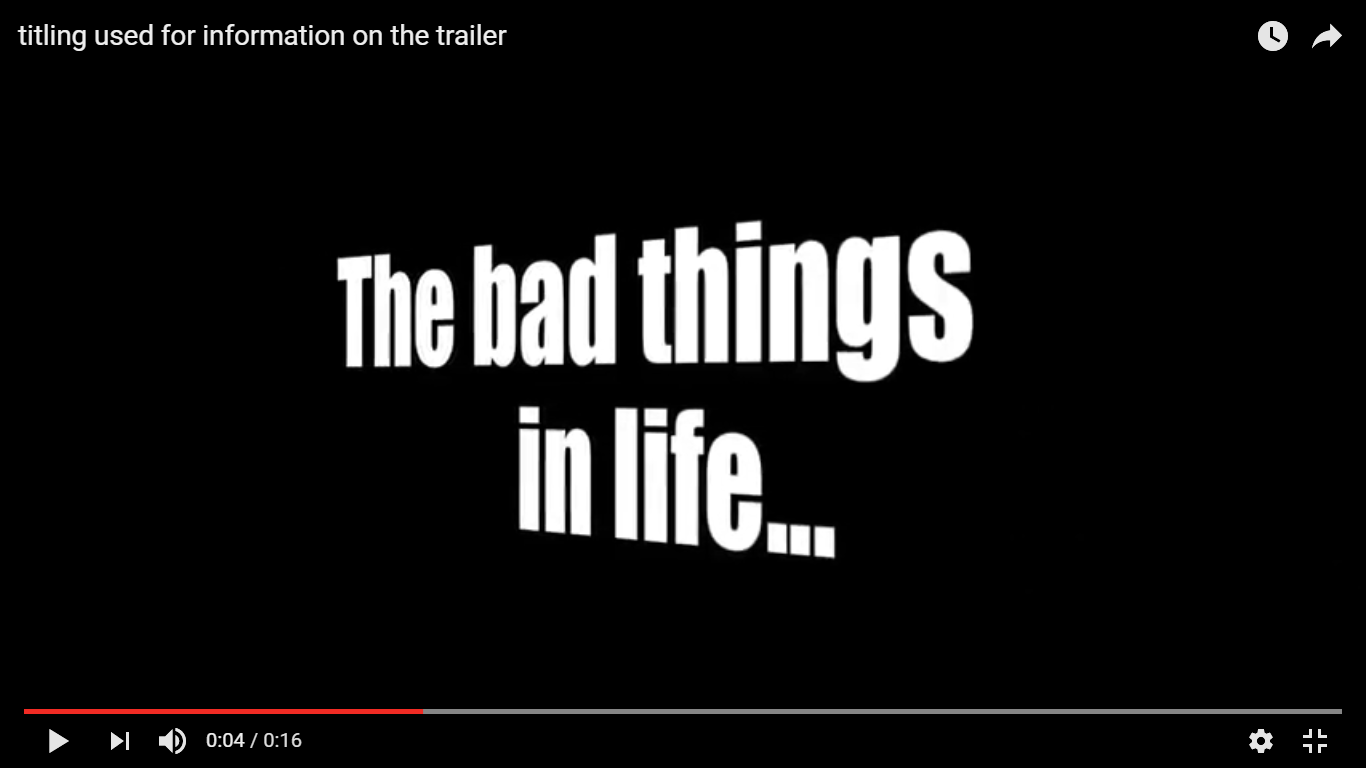
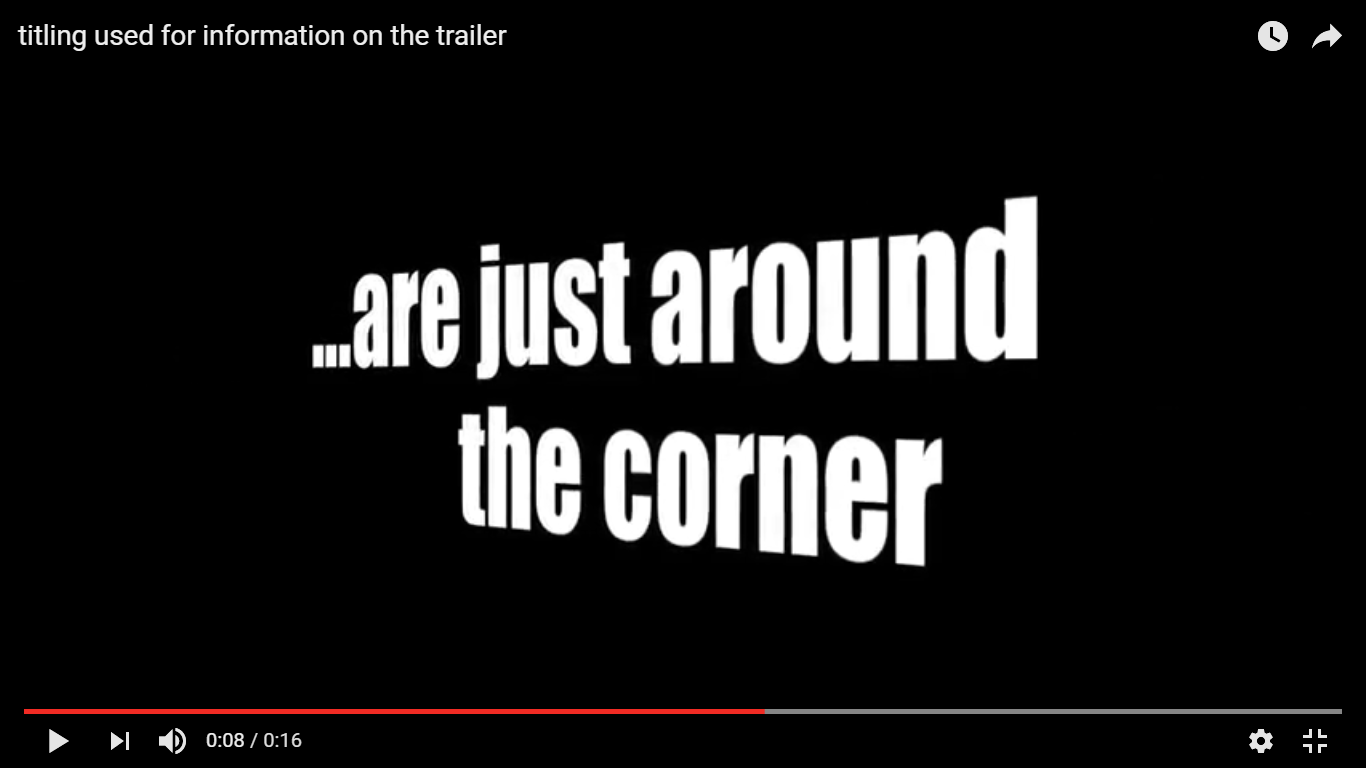
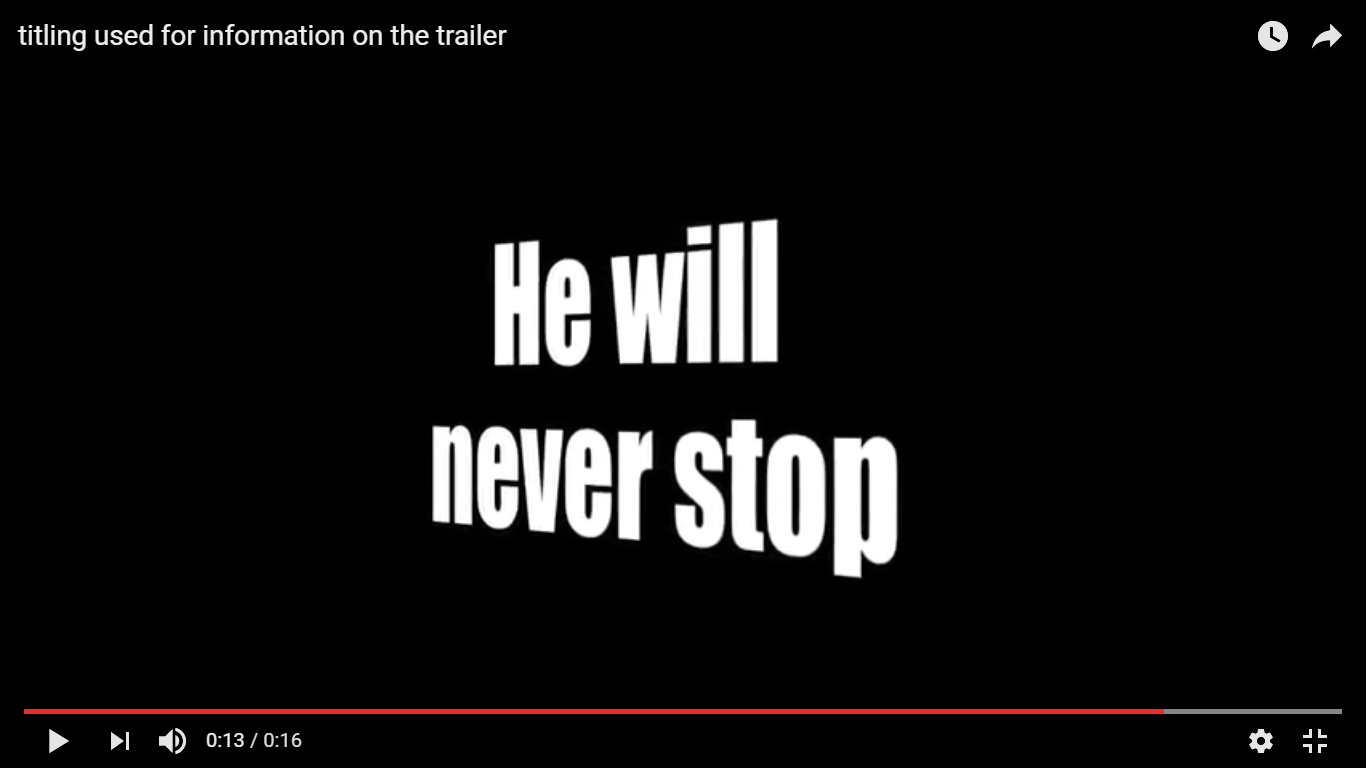
Overall I learnt a lot from my audience feedback when it came to my trailer and little bits of tweaks on my poster and magazine that I created. Whenever I needed feedback for a specific piece of work that I had produced or if I needed some feedback on what a trailer should look like I used Microsoft Forms to be able to send this out to people in school and it automatically gave results shown on this software that I used and I asked for what the best name for my trailer would be and what effects I should use too and this was always up-to-date with useful information to help me to proceed on creating something that was useful for my audience. As well as this, I sent messages out to my peers so I could get relevant feedback from them as well and tried to use everything technology wise to get answers. In addition, doing this helped conform to the conventions of my product and meet the expectations of the target audience, without having the feedback my product would then be unsuccessful. From the feedback given it also allowed me to understand what might appeal more memorable to them, and this is why I have created something unique with all of my products and used a wide range of tools and effects to help create the appeal facter that my intended audience are looking for. Including focusing more on the narrative with how images are represented in my magazine cover and film poster or how scenes are represented in the trailer to make it more exciting.
Subtitle
deck
By megan-l
deck
- 87


